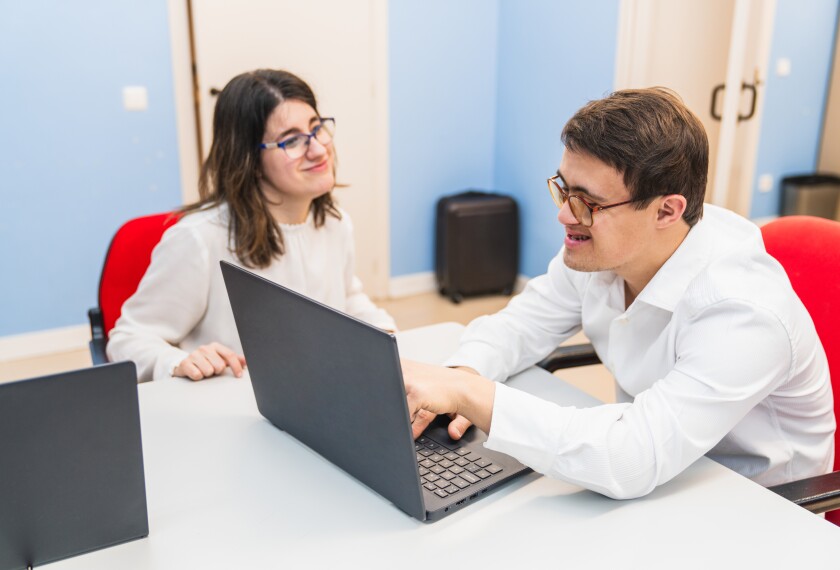“People with learning differences are human,” wrote Deanna White, a neurodiversity advocate and parent learning coach in response to a question we posed on LinkedIn. “Unique individuals and wonderful humans that are better defined by their strengths. So stop focusing on the weakness.”
We invited our social media followers across Facebook, LinkedIn, and Twitter to weigh in on the most effective way schools can better support students with learning differences.
Responses ranged from shifting educators’ mindset—like highlighting student strengths—to more far-reaching changes that would require schoolwide or district support.
Focus on students’ strengths
There are many ways of encouraging students to play to their strengths, as educators Winston Sakurai and Phyllis Fagell demonstrated in an August 2022 article by Education Week Assistant Editor Denisa Superville.
They detailed how they shared their own learning struggles as a way to connect with their students. Their personal successes show students, who may be struggling academically or socially, that anything is possible.
Here’s what other educators had to say.
1. Help them understand their learning strengths and challenges and growing them as strong self-advocates.
2. Devoting time and money to developing teachers’ abilities to differentiate.
- Amy S.
By having high expectations and giving them exposure to high-quality materials and experiences, even ones that seem “above them.” They will shock us with their insights every time.
- Angela P. 😒😒🥴
Meet students where they are
In a 2015 primer on the topic, EdWeek Assistant Editor Sarah D. Sparks wrote about how “differentiated instruction"—the process of identifying students’ individual learning strengths, needs, and interests and adapting lessons to match them—became a popular approach to helping diverse students learn together. Respondents largely agreed.
Time to work with every student. If you can meet with a child for a bit of time to help with exactly what she or he needs, it might ignite both learning and understanding.
So many ways...start with environment, a.k.a. The Third Teacher.
-
Reduce obstacles
-
Increase supports
-
Meet kids where they are
(h/t @drncgarrett)
Small class sizes, strong positive teacher/student relationships, differentiated instruction, and reflection.
Smaller class sizes
In a 2017 Opinion essay, former teacher Marc Vicenti wrote about “the daily wear and tear on educators when trying to juggle a full teaching load and meaningful relationships with lively young people who all have different needs and experiences.”
“We can either choose to be less effective in our practice or exhaust ourselves—neither of which is beneficial to students or our own well-being,” he wrote.
Smaller class sizes are one way of mitigating the risk of burnout while working to meet each student’s needs.
Small classes, small schools, local control. I am the principal in a pretty small school in a small community and I know every child, and every family and we can build programs to meet our students’ needs. A country run or state run school system can’t do that.
- Ryan G.
Increase funding to actually lower the student-to-teacher ratio. This allows teachers to give more time to the individual.
Fewer standardized tests
Standardized tests have long been criticized for narrowing instruction and for holding all students to the same standard when “students enter school at varying levels and learn and grow at different rates.”
The backlash against standardized testing renewed interest in alternative ways to evaluate students’ learning progress, like “performance assessments—the idea of measuring what students can do, not merely what they know”.
STOP standardized testing.
- Dawn W.
Fewer standardized or timed tests, teaching to mastery, not according to a schedule.
- Autumn
Give students a voice
Sometimes it’s best to go to the source to discern how to best tackle an issue. Giving these students a voice can not only empower them in their learning, but also help educators understand how to have the biggest impact.






